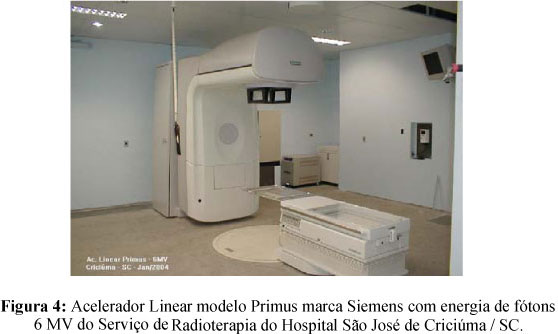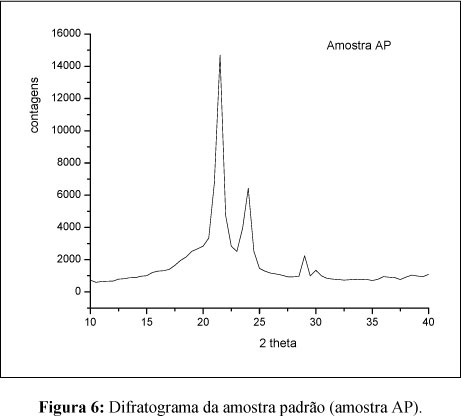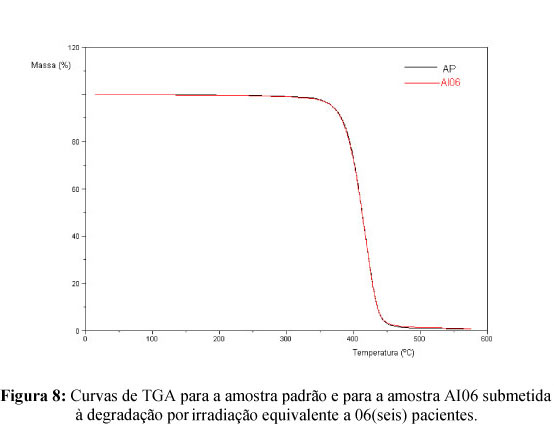In head and neck cancer radiotherapy, immobilization devices are used in order to ensure the patient immobilization and also to provide precise daily positioning during the treatment. Accuracy and reproducibility of the patient's position is fundamental to the successful delivery of radiation therapy. Such immobilization devices are used in the Radiotherapy Service of Hospital São José (HSJ) in Criciúma, SC, Brazil. These are usually employed in procedures for up to six patients, and the devices have shown deformations during the reuse process, leading the search for solutions to quality assurance in radiotherapy. This work aimed to characterize the polymeric constituent of the immobilizer and study its possible degradation due to thermal aging, the amount of irradiation, and the combined effect of both factors. The samples were prepared in order to undergo changes similar to the immobilization device when reused for up to six patients, according to the protocol used by the Radiotherapy Service of the HSJ. Thermogravimetric Analysis (TGA), Differential Scanning Calorimetry (DSC), and Wide-Angle X-Ray Scattering (WAXS) techniques were employed for polymer characterization. The DSC and WAXS results allowed the identification of constituent polymer of the immobilization device as poly (ε-caprolactone) (PCL). The TGA and DSC results indicated no significant effects of degradation in the samples. It was observed a small variation in the crystallinity values between the standard sample and those modified by thermal aging and also by the combined effect of thermal aging and irradiation. The melting point in the DSC curves of the material (Tm=63ºC) showed a lower value than the thermal bath temperature (T=70ºC), employed during the conformation process of the immobilization devices. This result suggests that the temperature of the thermal bath could be reduced to minimize the problems of deformation that has been observed in the immobilization device during reuse and might be possible to increase its useful life.
radiotherapy; immobilization device; degradation












